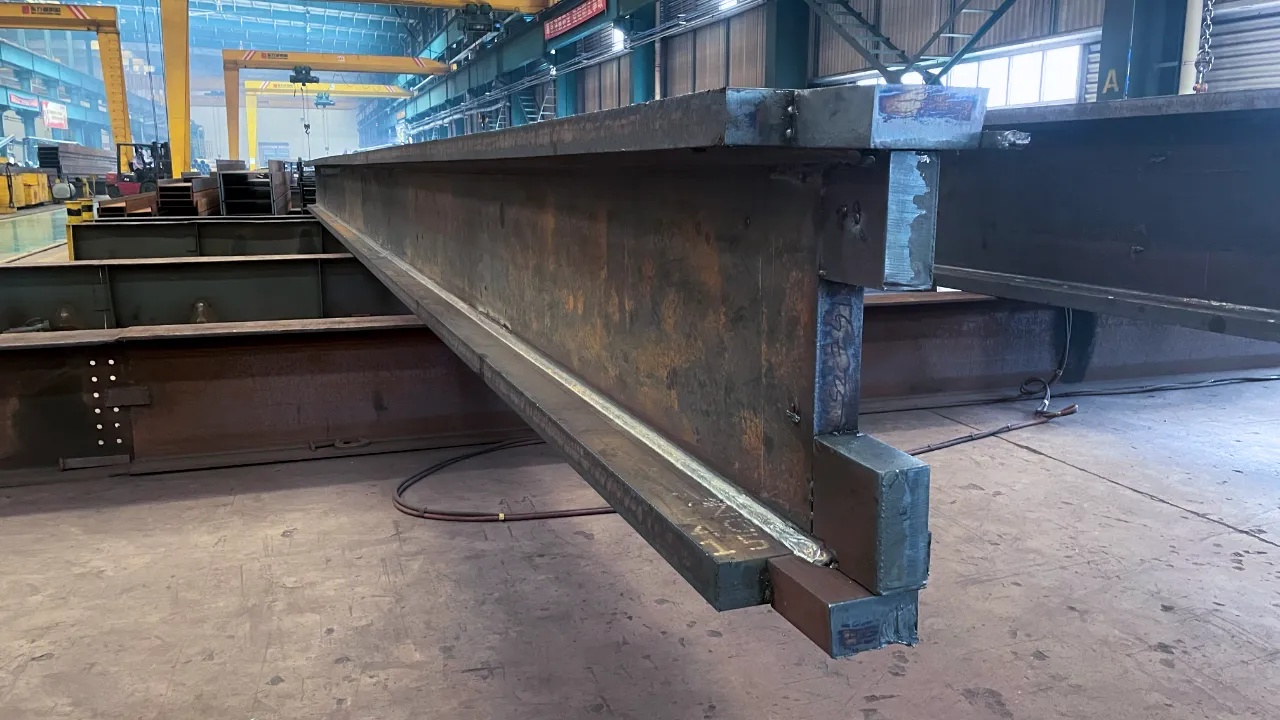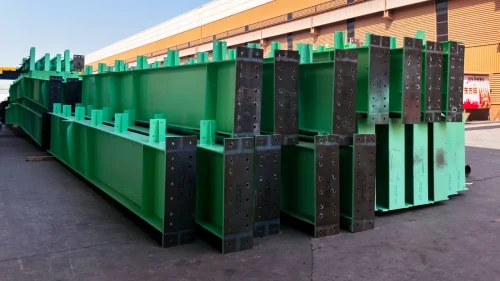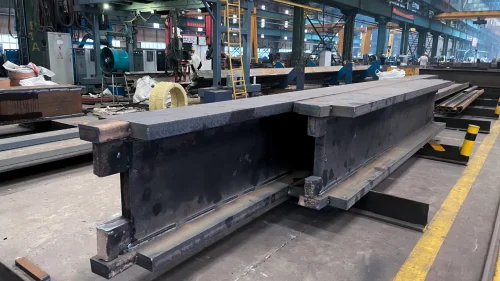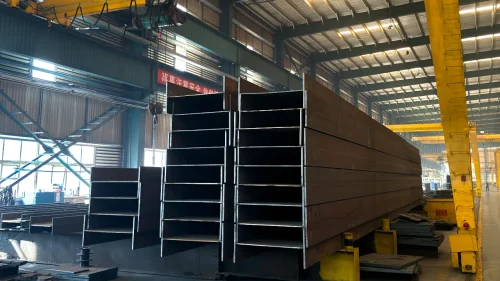A welded carbon steel I-section beam is a structural steel member shaped like the letter “I” in cross-section, fabricated by welding together steel plates rather than rolling from a single billet. It’s a versatile and high-strength element used in buildings, bridges, and industrial structures.
Structure & Composition
-
Flanges – The wide horizontal plates at the top and bottom, resist bending stresses.
-
Web – The vertical plate between the flanges, resists shear forces.
-
Welds – Typically continuous submerged arc welds (SAW) joining web to flanges.
Material
-
Carbon steel grades:
-
China: Q235B, Q355B, Q390B
-
International: ASTM A36, ASTM A572 Gr.50, EN S355JR
-
-
Carbon steel is chosen for high strength, good weldability, and cost-effectiveness.
Manufacturing Process
-
Plate cutting – Flange and web plates cut to size by CNC plasma or flame cutting.
-
Assembly & tack welding – Align and temporarily weld.
-
Full welding – Continuous SAW along both sides of web-flange joint.
-
Straightening – Remove distortion caused by welding heat.
-
Drilling & machining – Holes for bolts, end plates, or stiffeners.
-
Surface treatment – Shot blasting, painting, or galvanizing.
Advantages
-
Custom dimensions possible (unlike hot-rolled beams limited by mill sizes).
-
High load capacity due to thicker flanges or web if needed.
-
Efficient use of steel for specific load conditions.
-
Good weldability with structural carbon steel.
Applications
-
Building frames (girders, floor beams)
-
Bridge beams
-
Industrial plant structures
-
Crane runway girders
-
Marine and offshore structures
Cross-section Example
-
Flange thickness: 10–40 mm
-
Web thickness: 6–20 mm
-
Depth: 200–1,200 mm (or more for special cases)
-
Width: 150–500 mm





